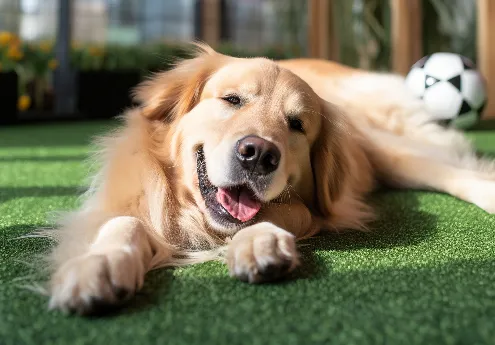
- Afrikaans
- Arabic
- Belarusian
- Bengali
- Czech
- Danish
- Dutch
- English
- Esperanto
- Estonian
- Finnish
- French
- German
- Greek
- Hindi
- Hungarian
- Icelandic
- Indonesian
- irish
- Italian
- Japanese
- kazakh
- Rwandese
- Korean
- Kyrgyz
- Lao
- Latin
- Latvian
- Malay
- Mongolian
- Myanmar
- Norwegian
- Persian
- Polish
- Portuguese
- Romanian
- Russian
- Serbian
- Spanish
- Swedish
- Tagalog
- Tajik
- Thai
- Turkish
- Turkmen
- Ukrainian
- Urdu
- Uighur
- Uzbek
- Vietnamese
environmentally friendly artificial grass
Oct . 10, 2024 22:35 Back to list
The Rise of Environmentally Friendly Artificial Grass
In recent years, the demand for artificial grass has surged as homeowners, landscapers, and sports facilities seek sustainable alternatives to natural grass. With traditional lawns requiring significant amounts of water, fertilizers, and ongoing maintenance, the environmental concerns associated with these practices have prompted many to look for greener solutions. Enter environmentally friendly artificial grass, a product that not only mimics the appearance and feel of natural grass but also addresses ecological concerns.
Benefits of Environmentally Friendly Artificial Grass
1. Water Conservation One of the most significant advantages of artificial grass is its ability to conserve water. Natural lawns require regular watering, especially in arid regions or during summer months. In contrast, environmentally friendly artificial grass needs little to no water for maintenance. This feature is particularly crucial in areas facing water scarcity, where conserving every drop can make a difference.
2. Reduced Chemical Use Maintaining a natural lawn often involves the use of pesticides, herbicides, and fertilizers. These chemicals can seep into the soil and groundwater, posing risks to both human health and local ecosystems. Environmentally friendly artificial grass eliminates the need for these harmful substances, creating a cleaner and safer environment. Many manufacturers now offer products that are made from non-toxic materials, ensuring a safe space for children and pets to play.
3. Durability and Longevity High-quality artificial grass is designed to withstand heavy foot traffic, making it ideal for sports facilities, playgrounds, and residential gardens alike. Unlike natural grass, which can become patchy and worn out over time, artificial options can last for many years with minimal maintenance. This durability means fewer resources are needed for replacements and repairs, contributing to an overall decrease in environmental impact.
4. Recycle and Sustain A growing number of companies are committing to sustainability by producing artificial grass from recycled materials. This not only reduces the amount of waste sent to landfills but also promotes a circular economy, where materials are reused and repurposed. Moreover, when the time comes to replace the artificial turf, many manufacturers have options for recycling, further minimizing environmental footprints.
5. Biodiversity Preservation By converting traditional lawns into artificial surfaces, we can preserve natural habitats that would otherwise be disrupted by extensive landscaping. This shift can help protect local flora and fauna, contributing to biodiversity conservation. Furthermore, the space saved from mowing and maintaining intrusive lawns can be utilized for creating native gardens or wildlife habitats.
environmentally friendly artificial grass

Considerations When Choosing Artificial Grass
While the benefits of environmentally friendly artificial grass are clear, it is essential to choose wisely. Not all products on the market are created equal. Here are some factors to consider
- Material Composition Look for grass made from recycled or eco-friendly materials. Avoid products that contain harmful chemicals or heavy metals. A reputable supplier should provide information about the material's safety and sustainability.
- Certifications Certifications from environmental organizations can help gauge a product’s eco-friendliness. Look for labels that indicate compliance with health and safety standards.
- Installation and Maintenance While artificial grass eliminates the need for watering and mowing, it still requires occasional cleaning to maintain its appearance. Familiarize yourself with the care requirements to ensure you are not inadvertently choosing a product that may have hidden environmental costs.
Conclusion
As the world continues to face environmental challenges, the move towards sustainable landscaping solutions becomes increasingly critical. Environmentally friendly artificial grass not only offers a practical alternative to traditional lawns but also aligns closely with the principles of conservation and sustainability. By opting for these innovative products, individuals and communities can contribute to a greener future while enjoying all the benefits of lush, green spaces without the guilt of resource depletion. Whether for residential use, sports fields, or public parks, environmentally friendly artificial grass paves the way for a more sustainable and eco-conscious approach to landscaping.
-
The Benefits of Artificial Turf for Indoors
NewsJul.15,2025
-
How Artificial Grass Suppliers Ensure Quality Products
NewsJul.15,2025
-
Artificial Grass and Pets: A Space for Relaxation
NewsJul.08,2025
-
Balcony & Outdoor Decoration with Artificial Grass
NewsJul.08,2025
-
Best Indoor Artificial Grass for Home
NewsJul.07,2025
-
Best Pet Turf for Dogs: Safe & Durable Artificial Grass Options
NewsJul.07,2025
Products categories









